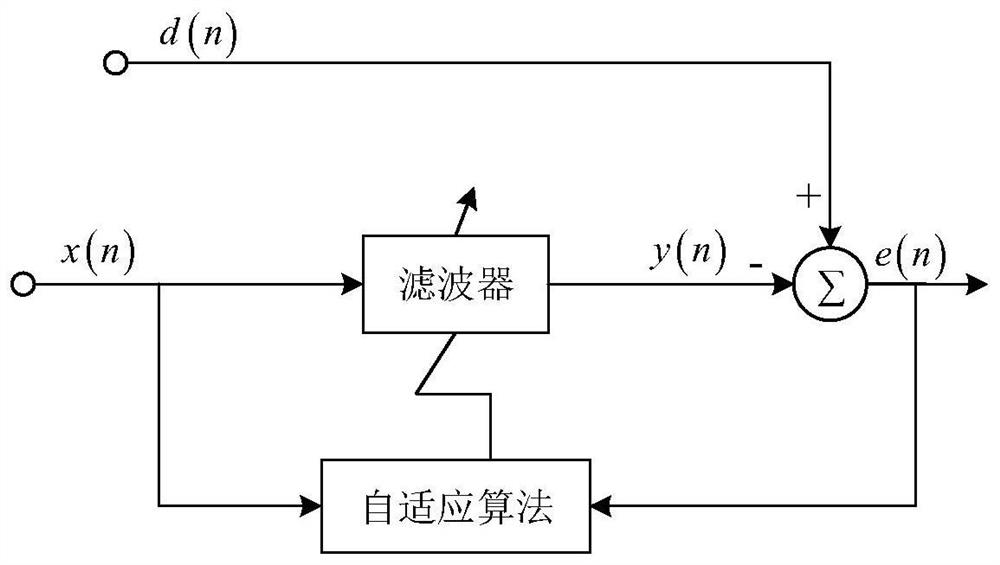Judgment method for iteration state of adaptive filtering algorithm
An adaptive filter and algorithm technology, applied in the field of signal processing, can solve the problems of difficult definition of standards, inability to accurately judge the iterative state of the system, large iterative errors, etc., and achieve the effects of strong adaptability, clear convergence and divergence, and small errors
- Summary
- Abstract
- Description
- Claims
- Application Information
AI Technical Summary
Problems solved by technology
Method used
Image
Examples
Embodiment 1
[0035] A method for judging the iterative state of an adaptive filtering algorithm, specifically as follows:
[0036] First, sort out the principle of adaptive filtering algorithm.
[0037] according to figure 1 , for a certain moment, the input signal is x(n), the expected response is d(n), the output response of x(n) after passing through the filter is y(n), and the difference e(n) between the two is the iterative error.
[0038] Let the filter estimation model be then there is
[0039]
[0040] In formula (1), x(n)=(x(n)...x(n-L+1)) T , where L is the filter length.
[0041] When the iteration error is expected to be zero, that is, when E{e(n)}=0, there is y(n)=d(n), and the filter iteration state is optimal at this time.
[0042] Let J(n)=e 2 (n), then there are
[0043]
[0044] Formula (2) pairs Seek the partial derivative, then there is
[0045]
[0046] Assuming that the iteration coefficient of the algorithm is μ, then we have
[0047]
[004...
PUM
 Login to View More
Login to View More Abstract
Description
Claims
Application Information
 Login to View More
Login to View More - R&D
- Intellectual Property
- Life Sciences
- Materials
- Tech Scout
- Unparalleled Data Quality
- Higher Quality Content
- 60% Fewer Hallucinations
Browse by: Latest US Patents, China's latest patents, Technical Efficacy Thesaurus, Application Domain, Technology Topic, Popular Technical Reports.
© 2025 PatSnap. All rights reserved.Legal|Privacy policy|Modern Slavery Act Transparency Statement|Sitemap|About US| Contact US: help@patsnap.com



